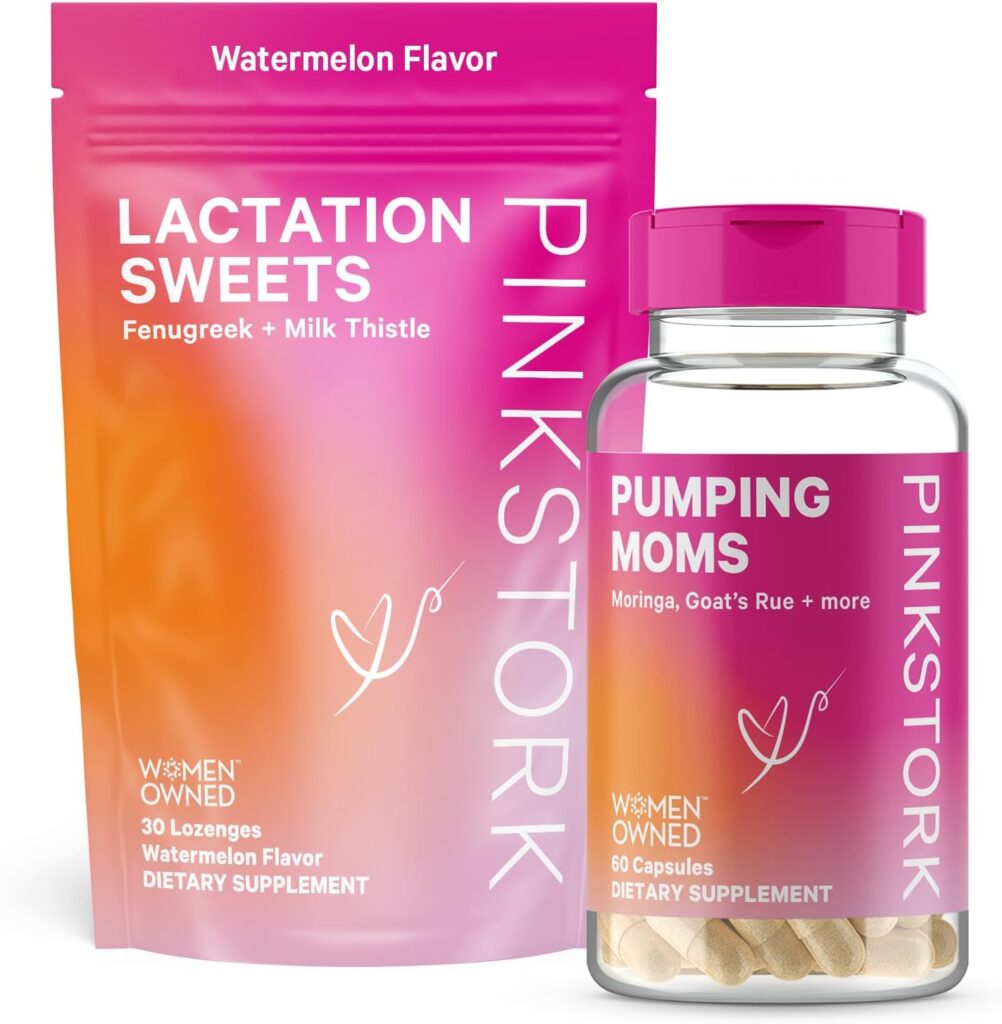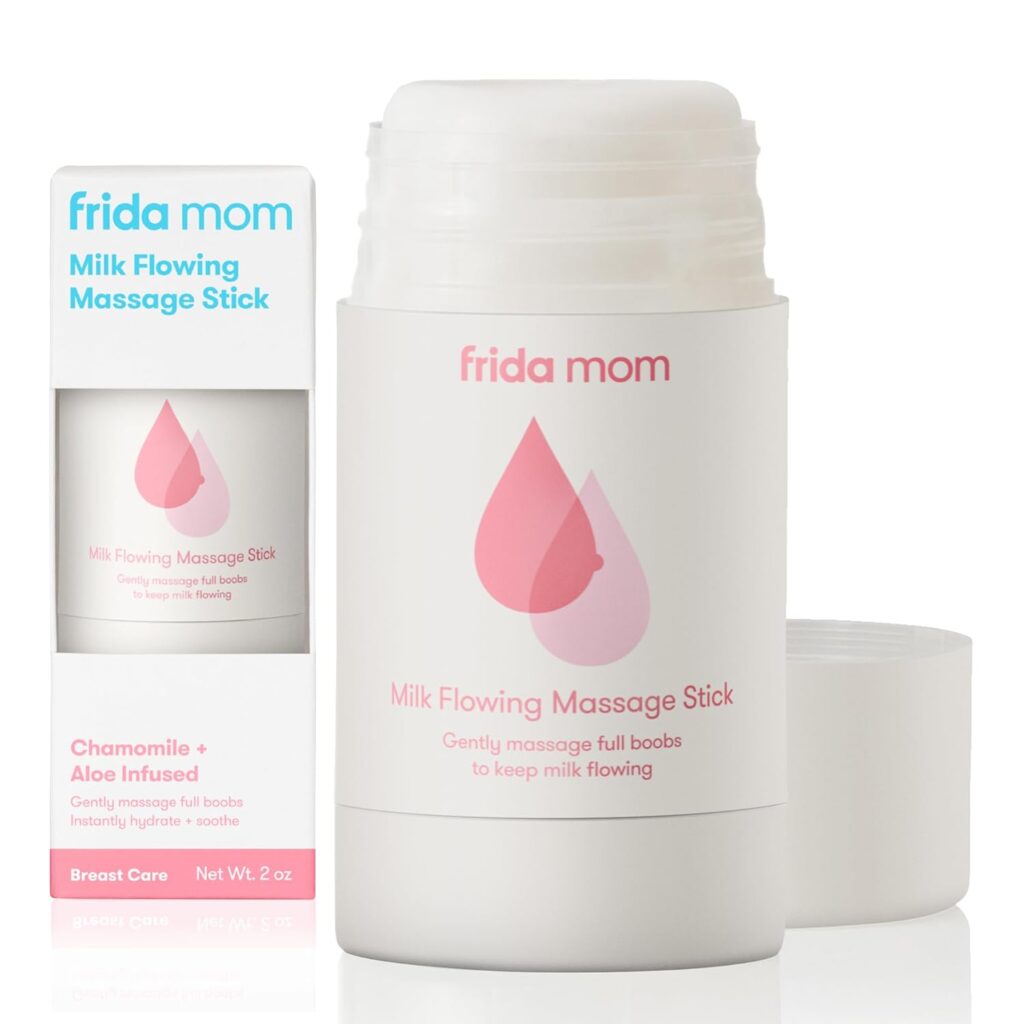Boosting breastmilk supply during growth spurts, nurse frequently and on demand. Ensure proper latch and breast emptying to stimulate production.
Breastfeeding mothers often worry about maintaining an adequate milk supply, especially during their baby’s growth spurts. Nursing more often is critical to meeting this increased demand. A baby’s frequent feeding signals the mother’s body to produce more milk. Mothers can also benefit from staying hydrated and well-nourished, as this supports overall milk production.
It’s important to focus on the baby’s hunger cues and maintain skin-to-skin contact to encourage nursing. Mothers should also rest as much as possible, as fatigue can impact milk supply. By following these proactive steps, mothers can successfully navigate their baby’s growth spurts while ensuring a sufficient supply of breastmilk.

Recognizing Growth Spurts
Recognizing growth spurts is key for new parents aiming to boost breastmilk supply. These are periods when babies need more milk than usual.
Identifying Signs
- Frequent feeding: Baby wants to eat more often.
- Increased fussiness: Baby may cry more and seem hungrier.
- Longer nursing sessions: Feeding times may stretch longer.
Typical Age Ranges
Understanding when to expect growth spurts helps you prepare. Here are the common times:
| Age | Weeks/Days |
|---|---|
| Newborn | 2 weeks |
| Infant | 4 weeks |
| Baby | 3 months |
| Older Baby | 6 months |
| Toddler | 9 months |
Cluster Feeding Explained
Moms often notice babies wanting more milk during growth spurts. This can lead to worry about milk supply. Understanding cluster feeding helps. Let’s explore what it is and its importance.
What Is Cluster Feeding?
Cluster feeding is when babies feed closer together at certain times. It’s normal and happens mostly in the evenings. It’s like a mini all-you-can-eat buffet for your little one.
Its Role In Supply Adjustment
Cluster feeding is nature’s way of increasing breastmilk supply. As your baby feeds more, your body gets the signal to make more milk. It’s a perfect supply and demand system.
- Signals your body to produce more milk
- Helps adjust milk supply to baby’s growing needs
- Typically lasts a few days

Nutrition For Milk Production
Nutrition plays a pivotal role in milk production for nursing mothers. Understanding the right foods and hydration can help boost breastmilk supply, especially during baby’s growth spurts.
Essential Foods
Some foods have properties that support lactation and enhance milk quality:
- Whole grains like oatmeal
- Leafy greens such as spinach
- Protein-rich foods like chicken and eggs
- Nuts and seeds, particularly almonds
- Garlic, known for milk-boosting effects
Integrating these foods into daily meals can help maintain a rich milk supply.
Hydration And Breastmilk
Drinking enough fluids is crucial for milk production. The recommended intake is about 3 liters per day. Here’s why:
| Hydration Level | Impact on Milk Supply |
|---|---|
| Well-hydrated | Stable milk production |
| Dehydrated | Potential drop in supply |
Water, milk, and natural juices are great choices for staying hydrated.
Latching Techniques
Latching Techniques play a crucial role in breastfeeding success. A correct latch ensures your baby effectively removes milk, stimulating supply, especially during growth spurts. Let’s explore how to achieve a proper latch and address common issues.
Proper Latch For Effective Feeding
To ensure your baby is getting enough milk, focus on the latch. A good latch will feel comfortable and your baby will have a mouthful of breast. Here’s how to achieve it:
- Position your baby with their nose opposite your nipple.
- Support your breast with a C-hold, fingers underneath, thumb on top.
- Wait for your baby to open wide before bringing them to your breast.
- Your baby’s chin and nose should touch your breast, mouth wide open.
- Look for rhythmic sucking and swallowing with minimal nipple pain.
Troubleshooting Latch Issues
If you’re experiencing pain or your baby seems unsatisfied, it might be a latch issue. Here’s how to troubleshoot:
- Break the suction by gently inserting your finger into the corner of your baby’s mouth.
- Reposition your baby, ensuring they’re tummy-to-tummy with you.
- Encourage your baby to open wide by tickling their lip with your nipple.
- Look for signs of a deep latch: a large portion of the areola in your baby’s mouth and rounded cheeks.
- If problems persist, seek help from a lactation consultant.
Breastfeeding Positions
Nailing the right breastfeeding positions can be a game-changer for both mom and baby. It ensures comfort and maximizes milk flow, especially during those demanding growth spurts. Let’s explore some effective positions to help boost your breastmilk supply.
Positioning For Comfort
Comfort is key when it comes to successful breastfeeding. A relaxed mom and a well-latched baby mean a better milk supply. Here are some tips:
- Use a nursing pillow for added support.
- Try different chairs to find the best fit for you and your baby.
- Alternate holds to find the most comfortable position.
Remember, a comfortable position reduces stress and encourages more frequent feedings, which is essential during growth spurts.
Switching Sides Strategy
Switching sides can stimulate milk production. Here’s a simple strategy:
- Start feeding on the side that feels fuller.
- Once your baby slows down, burp and switch sides.
- Repeat the process to ensure both breasts are well drained.
This method encourages a good milk supply by fully emptying each breast, signaling your body to produce more milk.

Credit: www.instagram.com
Pumping Strategies
Discovering effective pumping strategies can be a game-changer for mothers looking to boost breastmilk supply during baby growth spurts. A thoughtful approach to pumping can help ensure your little one gets the nutrition they need when they need it most. Let’s explore some key tactics for when and how to pump, as well as the types of pumps that might work best for your lifestyle.
When To Pump
Pumping between feedings can help increase your milk supply. Aim to pump right after your baby feeds to empty breasts completely. This signals your body to produce more milk.
Consider pumping from one breast while nursing on the other. This method catches the let-down that occurs on the opposite side.
Early morning pumps are beneficial as milk supply is typically higher. Try adding a pumping session an hour after the first morning feed.
Types Of Pumps
Choosing the right breast pump is crucial for a comfortable and efficient pumping experience.
- Manual pumps are quiet, portable, and don’t require electricity.
- Electric pumps offer quick, powerful suction and often feature multiple settings.
- Battery-operated pumps provide convenience for on-the-go moms.
- Hospital-grade pumps are the most powerful and efficient option, often available for rent.
| Pump Type | Pros | Cons |
|---|---|---|
| Manual | Portable, no power needed | Can be tiring for hands |
| Electric | Efficient, multiple settings | Needs power source |
| Battery-Operated | Good for travel | Less powerful, battery cost |
| Hospital-Grade | Most efficient | Usually larger and more expensive |
Herbal Remedies And Supplements
Navigating through your baby’s growth spurts can be challenging, especially with the increased demand for breastmilk. While nature has designed a mother’s body to adjust to these demands, sometimes a little boost is necessary. Herbal remedies and supplements may offer that extra support. Let’s explore how natural ingredients can help enhance breastmilk supply.
Natural Galactagogues
Galactagogues are substances that promote lactation. Many herbs fall into this category and can be used to support milk production. Here’s a list of popular natural galactagogues:
- Fenugreek: A common herb in lactation teas.
- Blessed Thistle: Often paired with fenugreek.
- Fennel: Can be eaten raw, cooked, or as a tea.
- Milk Thistle: Known for liver support and milk production.
- Goat’s Rue: A potent herb for milk supply.
These herbs can be found in teas, capsules, and tinctures. It’s important to choose high-quality products for the best results.
Safety And Efficacy
When considering herbal remedies and supplements, safety is paramount. Always consult with a healthcare professional before starting any new supplement, especially when breastfeeding. While many natural galactagogues are considered safe, their efficacy can vary from person to person.
| Herb | Common Form | Consideration |
|---|---|---|
| Fenugreek | Capsule, Tea | May cause maple syrup odor in sweat |
| Blessed Thistle | Capsule | Combine with fenugreek for best results |
| Fennel | Tea, Seeds | Should not be used in large amounts |
| Milk Thistle | Capsule | Also supports liver health |
| Goat’s Rue | Tincture, Capsule | Start with a lower dose to test response |
Remember to track your supply and your baby’s growth to ensure that the supplements are effective. If there’s no improvement, or if you experience any side effects, stop the supplement and consult your healthcare provider.

Managing Feeding Frequency
Every mother knows the challenges of a baby’s growth spurt. Suddenly, your baby seems hungrier than ever, and you’re left wondering how to keep up. Managing feeding frequency is key to boosting breastmilk supply during these critical periods. Let’s explore practical steps to balance your baby’s increased hunger with necessary rest.
Balancing Baby’s Hunger And Rest
Recognize the signs of your baby’s growth spurt. You might notice a surge in feeding frequency. This is normal and signals your body to produce more milk. Follow your baby’s lead; offer the breast whenever they show signs of hunger.
It’s also essential to ensure your baby gets enough rest. Sleep is crucial for growth and development. When not feeding, encourage your baby to nap. This will aid their growth and give you a much-needed break to recharge.
Cues For Hunger And Fullness
- Hunger cues: Fussing, sucking on hands, and turning head towards the breast.
- Fullness cues: Slowing down, releasing the breast, and looking relaxed.
Understanding these cues can prevent overfeeding and fussiness. Respond promptly to hunger signals to keep your baby content and stimulate milk production. Recognizing fullness cues ensures your baby is satisfied and prevents discomfort.
Sleep And Breastmilk Supply
Moms need quality sleep to maintain a good breastmilk supply. Let’s explore how rest can play a crucial role in producing enough milk during your baby’s growth spurts.
Importance Of Rest
Rest is vital for a healthy milk supply. When moms get enough sleep, their bodies rejuvenate. This boosts the hormones responsible for milk production.
- Less stress means better milk flow.
- Rest helps maintain optimal hormonal balance.
- Immune system stays strong, protecting both mom and baby.
Sleep Patterns And Milk Production
Sleep patterns can affect how much milk a mother produces. Consistent sleep supports consistent milk supply.
| Number of Hours | Effect on Milk Supply |
|---|---|
| Less than 6 hours | Possible decrease in supply |
| 6 to 8 hours | Maintains current supply |
| More than 8 hours | Can improve supply |
Naps during the day can also help. They replenish a mother’s energy for better milk production.
Stress And Its Impact
Stress can significantly affect a mother’s ability to produce breastmilk. During growth spurts, babies feed more often, increasing stress for mothers. Understanding how stress impacts milk supply is crucial for effective management.
Coping Mechanisms
Identifying and using effective coping mechanisms can help reduce stress. Simple strategies include:
- Seeking support from friends, family, or breastfeeding groups.
- Setting realistic goals for both breastfeeding and daily tasks.
- Prioritizing sleep whenever possible to reduce fatigue.
Stress Reduction Techniques
Implementing stress reduction techniques can positively impact breastmilk production. Key methods include:
- Deep breathing exercises to calm the mind.
- Meditation or yoga to maintain inner peace.
- Regular light exercise, such as walking with your baby.
Adopting these techniques can create a more relaxed breastfeeding environment, encouraging milk production during critical growth spurts.

Staying Hydrated
Staying Hydrated is crucial for nursing mothers, especially during growth spurts. Proper hydration helps maintain ample breastmilk supply. Let’s explore how much water you should drink and the effects of not drinking enough.
Water Intake Recommendations
Drinking enough water is key for breastmilk production. Here are simple guidelines:
- Aim for at least 8-12 glasses of water daily.
- Include liquids like juices and soups to meet your hydration needs.
- Drink a glass of water every time you nurse your baby.
Effects Of Dehydration
Not drinking enough water can reduce your milk supply. Here are signs of dehydration:
| Sign | Description |
|---|---|
| Dry Mouth | Lack of saliva, leading to a sticky feeling. |
| Fatigue | Feeling tired and sluggish throughout the day. |
| Dark Urine | Deep yellow or amber-colored urine. |
Stay alert to these signs and increase your fluid intake if you notice them.

Credit: m.facebook.com
Seeking Professional Help
Seeking Professional Help can be a game-changer for mothers facing challenges with breast milk supply during baby growth spurts. Breastfeeding is a journey with unique hurdles, and sometimes, you may need an extra helping hand. Knowing when to reach out and where to find support ensures both you and your baby continue to thrive.
When To Consult A Lactation Expert
Consult a lactation expert if you notice:
- Baby’s weight gain is not on track.
- Difficulty latching persists.
- Pain during breastfeeding continues.
- Worries about milk quantity are causing stress.
These experts provide personalized advice and practical solutions to enhance milk production.
Support Groups And Resources
Connecting with support groups offers:
- Emotional support from peers.
- Access to shared experiences and tips.
- Information on local breastfeeding resources.
Online forums, social media groups, and breastfeeding hotlines serve as additional outlets for guidance.
Using A Breast Milk Stash
Using a Breast Milk Stash can be a game-changer for moms experiencing baby growth spurts. When your little one is hungrier than usual, having extra milk on hand ensures they get what they need. Let’s explore how to build and use a breast milk reserve effectively.
Building A Reserve
Start by pumping extra breast milk during regular feedings. Aim to pump after nursing when your breasts are already stimulated. This can help you collect more milk over time. Store this milk to create a healthy stash.
- Pump after morning feedings when milk supply is higher.
- Use a double electric pump to save time.
- Label milk with the date pumped.
Proper Storage And Thawing
Storing breast milk correctly keeps it safe for your baby. Freeze milk in small quantities to thaw easily as needed.
| Storage Location | Temperature | Duration |
|---|---|---|
| Room temperature | Up to 77°F (25°C) | 4-6 hours |
| Refrigerator | 39°F (4°C) or colder | Up to 4 days |
| Freezer | 0°F (-18°C) or colder | 6 months is best; up to 12 months is acceptable |
For thawing, place the frozen milk in the refrigerator overnight. Alternatively, run it under warm water for quicker thawing. Never microwave breast milk as it can create hot spots that may burn your baby.
- Thaw milk in the refrigerator overnight.
- Use warmed milk within 24 hours.
- Swirl gently to mix separated layers.
Myths About Milk Supply
Nursing mothers often worry about their milk supply during baby growth spurts. Many myths surround breastmilk production and its ability to meet the baby’s needs. Let’s explore and debunk these myths to ease minds and ensure healthy feeding.
Debunking Common Misconceptions
Misinformation can cause unnecessary stress. Here are truths that dispel common myths:
- Frequent nursing does not mean low supply.
- Soft breasts still produce ample milk.
- Supplements and teas aren’t magic solutions.
- Short nursing sessions can still be effective.
Facts Vs. Fiction
| Fiction | Fact |
|---|---|
| Babies need supplements during growth spurts. | Breastmilk adjusts to baby’s needs without supplements. |
| Larger breasts mean more milk. | Milk production is about demand, not size. |
| Stored milk is better during spurts. | Fresh milk has all nutrients for each growth stage. |
| Pumping is the best way to know supply. | Baby’s growth and diaper count are real indicators. |
Long-term Breastfeeding Goals
Breastfeeding is a journey with its highs and lows, particularly during growth spurts. Understanding how to boost breastmilk supply can ensure continued success for long-term goals.
Setting Realistic Expectations
It’s important to know that growth spurts are natural and temporary. Expect more frequent feeding, but also know that it helps increase supply.
- Trust your baby’s instincts.
- Recognize the signs of a growth spurt.
- Prepare for increased feeding sessions.
Maintaining Supply Over Time
To keep up with your baby’s needs, focus on maintaining a healthy milk supply. This requires consistency and patience.
- Nurse on demand to stimulate production.
- Ensure proper latch technique.
- Hydrate and eat nutritious foods.
Remember, every breastfeeding journey is unique. Stay positive and seek support when needed.
Frequently Asked Questions: Boosting Breastmilk Supply
How To Increase Milk Supply During Growth Spurt?
To increase milk supply during a growth spurt, nurse frequently, ensure proper latch, offer both breasts, and avoid pacifiers and bottles early on.
Do Babies Nurse More During A Growth Spurt?
Yes, babies typically nurse more frequently during growth spurts to support their increased nutritional needs.
Should You Pump During A Growth Spurt?
Yes, pump during a growth spurt to maintain supply and meet your baby’s increased demand.
How Can I Drastically Increase My Breast Milk Production?
To significantly boost breast milk production, nurse frequently, ensure proper latch, alternate breasts during feeding, and express milk after nursing. Stay hydrated and maintain a balanced diet.
How Often Do Babies Have Growth Spurts?
Growth spurts can occur frequently, typically when babies are around 2 weeks, 6 weeks, 3 months, and 6 months old.
Conclusion
Navigating growth spurts can challenge any breastfeeding journey. Remember, frequent nursing is your ally in boosting breastmilk supply. Trust in your body’s natural response to your baby’s increased demand. Stay hydrated, rest when you can, and reach out for support if needed.
Your dedication to your baby’s growth and nutrition is the key to a thriving breastfeeding experience. Keep going; you’re doing great!








1 thought on “Boosting Breastmilk Supply: Navigating Growth Spurts”